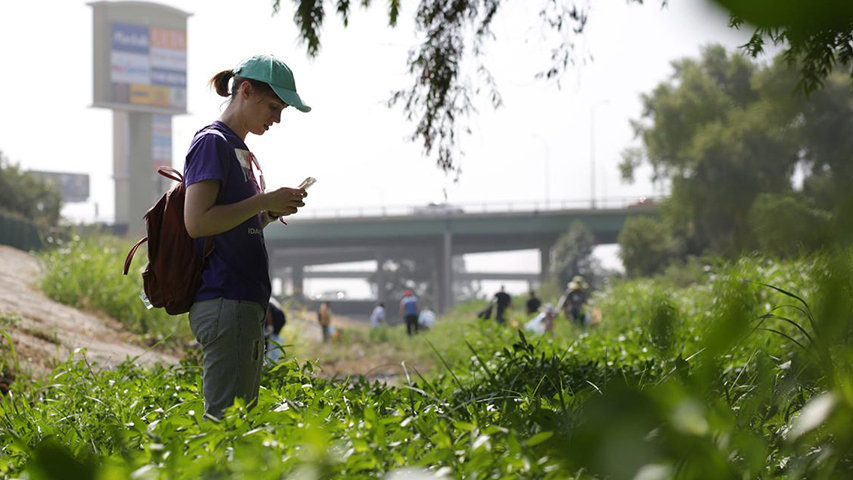
Encouraging Local Communities to Appreciate Local Nature
by Yash Saboo May 21 2018, 4:44 pm Estimated Reading Time: 2 mins, 41 secsWhen you think about nature, cities are not what comes to your mind. Nature is a camping trip to a state park, or of grandiose landscapes with forests, lakes and snow-capped mountains, or spending a day at pristine beaches with golden sand. These are likely the images that will pop into your head when you think of nature. Well, the City Nature Challenge thinks differently and hopes to change that.
The City Nature Challenge is an initiative started off by Lila Higgins, Community Science Senior Manager at the Natural History Museum of Los Angeles along with her colleague Alison Young, Citizen Science Manager at the California Academy of Sciences in San Francisco. The duo brainstormed ways to engage their communities as part of the celebration. They decided to use the event as an opportunity to build on the rivalry between the two cities.

Source : City Nature Challenege
As Higgins said, “people in each city compare how much rent is, who’s the better baseball team- the Dodgers or the Giants- and who has the better food scene.” Higgins also ensured that while LA has the best food, there still seemed to be some uncertainty when it came to which of the two cities has the greater species biodiversity. It was this realization that led to the first-ever City Nature Challenge, in which volunteers from both cities spent eight days documenting nature. The popular citizen science tool for collecting biodiversity information, iNaturalist, would be used to keep track of each cities score.
The event was a huge success, with over 20,000 observations recorded. This made other cities take notice. Richard Smart, Community Science Manager at the Natural History Museum of LA, hails from Texas – another state that enjoys a good competition. A friend of his from Houston, already an avid user of iNaturalist, reached out to see how they could get involved. The word had gotten out. That year, 16 US cities took part and more than 4,000 people submitted over 125,000 observations. They even got the mayor of LA on board. The challenge was so well received that it spread across the country the following year. Now, it encompasses locations from California’s coast to India and beyond.
Sixty-nine cities from all around the world had signed on to participate, including Tokyo, London, Rome, Buenos Aires, Rio de Janeiro and Hong Kong. As Lila notes, the success of the challenge has a lot to do with the ease of participation. “You can go outside on your lunch break, you can do it on your way to work, you can do it when you get off the bus, you can do it taking the kids to school,” said Higgins.
After the challenge got over, the folks of iNaturalist tallied up the observations.
This year, the San Francisco Bay Area won with the most observations, and the global reach of the project was immense. With all 68 participating global cities combined, more than 17,329 people around the world submitted 441,888 observations. Of those findings, 4,075 were ‘research grade’ observations, adding 599 rare, endangered, and threatened species to the iNaturalist database.
This is a unique way to get local communities involved in making their city better.




-173X130.jpg)
-173X130.jpg)
-173X130.jpg)
-173X130.jpg)
_(1)-173X130.jpg)

-173X130.jpg)
